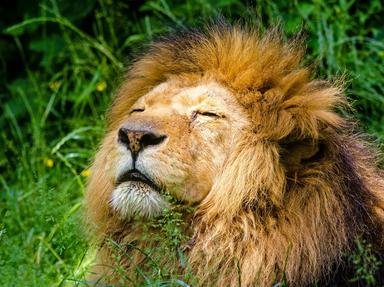Quiz Answer Key and Fun Facts
1. There are only four extant species of hyena. Which one is the rarest?
2. Which species of hyena is the only surviving relative of the dog-like hyenas, which mostly went extinct about 1.5 million years ago?
3. Which extinct genus of hyena became the only hyena to cross the Bering Land Bridge to the Americas?
4. Which of these statements true about the milk of a spotted hyena?
5. The largest extant species of hyena is which of these?
6. Out of the four extant species of hyena, which two species are socially monogamous?
7. Which extant species of hyena are born with their eyes open?
8. The striped hyena is the national animal of which country?
9. Which of these is a difference between the hunting techniques of the spotted hyena and the striped hyena?
10. Which extant species of hyena mainly eats termites?
11. Which species of hyena is the most vocal?
12. The largest species of extinct hyena is which of these?
13. Of the extant hyena species, which has the strongest bite force?
14. Hyenas in general are subjected to an unfair stereotype, which has scientifically been proven to be untrue. Which stereotype is this?
15. The spotted hyena has a higher than average life expectancy in relation to other land carnivores.
Source: Author
LuH77
This quiz was reviewed by FunTrivia editor
rossian before going online.
Any errors found in FunTrivia content are routinely corrected through our feedback system.
